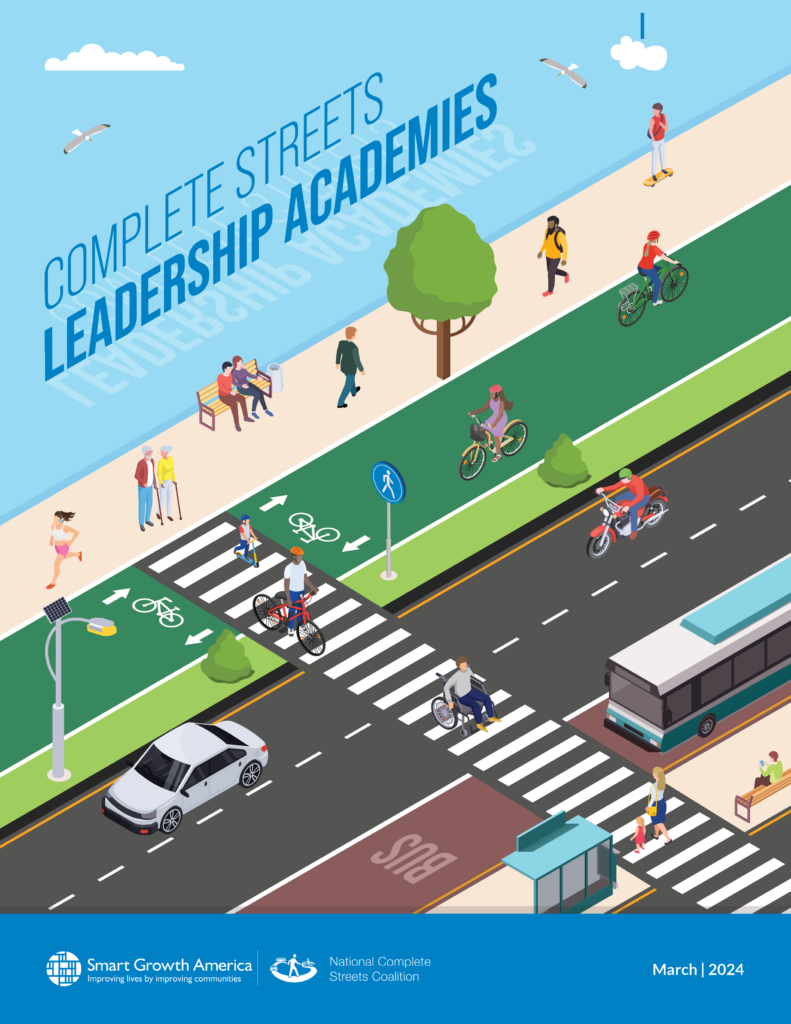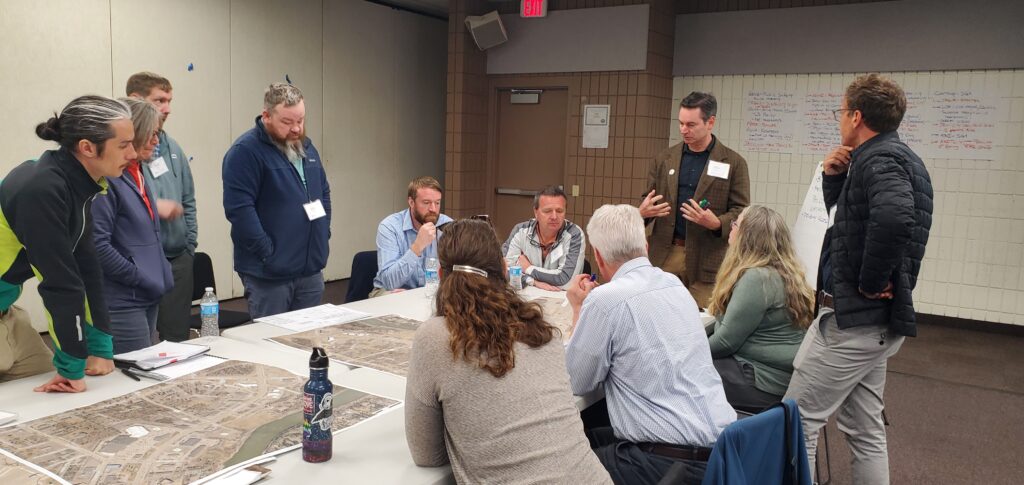While local and state participants had the desire to address safety and accessibility in Soldotna, they were unable to overcome a number of challenges that ultimately prevented the implementation of the quick-build project during the program. However, both Soldotna and the State of Alaska benefited from their efforts to make Sterling Highway safer. Read the full case study in the Complete Streets Leadership Academies Report and explore the other case studies here.
Failure to implement
Although AKDOT&PF and the Soldotna team were able to build partnerships and a vision during an in-person convening, when the teams went their separate ways, they lost that face-to-face communication, and this proved detrimental to future progress on the project.
The overarching themes of the relationship between Soldotna and AKDOT&PF can be witnessed in any number of states across the U.S.—lack of clarity in roles and responsibilities and challenges around available resources. Multiple people at AKDOT&PF were involved and it was unclear who had authority to make approvals to move ahead. While Soldotna personnel hoped to use temporary materials, standard for a quick-build project, these required specific approval from AKDOT&PF. AKDOT&PF did not have policies or processes in place to support quick-build demonstrations and participating staff did not have the space to create such policies. Confusion about what was and wasn’t allowed slowed the project’s progress.
Ultimately, the teams were up against the most unforgiving element: time. Soldotna had aimed to install the project so it was in place at the time when visitor traffic in the area was highest and before the challenge of winter weather would put the demonstration at risk. As the process to reach a consensus and receive AKDOT&PF approval dragged on, finding a path forward seemed all but impossible.
Proposed Project Concept
The city selected the intersection of Birch Street and Sterling Highway for their quick-build project. Summer festivals at the nearby park attract visitors from far and wide, creating increased traffic across all modes. City personnel and local residents wanted to address concerning design elements so that people walking, cycling, and using mobility aids—especially in large crowds during the summer—would be able to feel safe as they crossed the streets.
To address the narrow sidewalk near crossings, the Soldotna team proposed bump-outs along the curb, giving more people space to wait for the signal to change. They planned to accomplish this with flex post delineators. A bike lane along Birch Street disappears at Sterling Highway, forcing cyclists to cross unprotected to continue their journey. The team discussed painting a green bike box just before the crosswalk on Birch Street and adding dashed
green lines across Sterling Highway, giving cyclists a place to wait and a dedicated place to ride across the highway. In addition to the dashed green bike lane, the Soldotna team proposed widening the crosswalks and changing from the two-line parallel style to a ladder design. This would also allow the
team to experiment with colors or patterns that add additional visual appeal and further attract the attention of drivers on the large, high-speed road.
Other components to enhance visibility included standard options, like introducing a pedestrian crossing sign, and more creative solutions, like hanging brightly colored flags or flower baskets on the light poles along the highway.
Key Takeaways
Establish clear processes. Members at DOT&PF felt that the quick-build project would have benefited from having clear processes established early on, including clarifying what the state DOT would be comfortable allowing for a temporary project, whose approval would be needed, and what the approval process would look like. This would have resolved many of the challenges and frustrations faced by the city in installing their project and would be necessary if this type of work is to be replicated in other parts of the state.
Coordination is key. Sharing ownership of any project can be difficult, particularly when working with a team several hours away. But partnership is essential to a quick-build demonstration’s success, not only in terms of clear
communication but also in a willingness to share resources. This is particularly true for state DOTs working with smaller communities that might have fewer resources to spare where the state DOT could offer equipment, staff, and other resources to advance the project.
Obstacles will arise. A first-time quick build always comes with challenges, and anticipating and planning for hiccups will help ensure a project’s success. State DOTs and cities would be wise to embed some flexibility in their timeline and commit to resolving obstacles quickly with creativity and the larger outcomes in mind.
 In 2022, Smart Growth America launched the Complete Streets Leadership Academies in Alaska, California, Connecticut, and Tennessee to equip and train local agencies and state departments of transportation to collaborate, innovate, and commit to making changes together to address safety on these dangerous state-owned roads. Cohorts were selected to plan and implement “quick-build” demonstration projects, a way to pilot and test new ideas and street designs to activate streets and better support walking, biking, and rolling.
In 2022, Smart Growth America launched the Complete Streets Leadership Academies in Alaska, California, Connecticut, and Tennessee to equip and train local agencies and state departments of transportation to collaborate, innovate, and commit to making changes together to address safety on these dangerous state-owned roads. Cohorts were selected to plan and implement “quick-build” demonstration projects, a way to pilot and test new ideas and street designs to activate streets and better support walking, biking, and rolling.This program and report was developed with funding from the Centers for Disease Control and Prevention’s (CDC) Division of Nutrition, Physical Activity, and Obesity (Cooperative Agreement CDC-RFA-OT18-1802). The views presented in this product do not necessarily reflect the views and/or positions of CDC.
